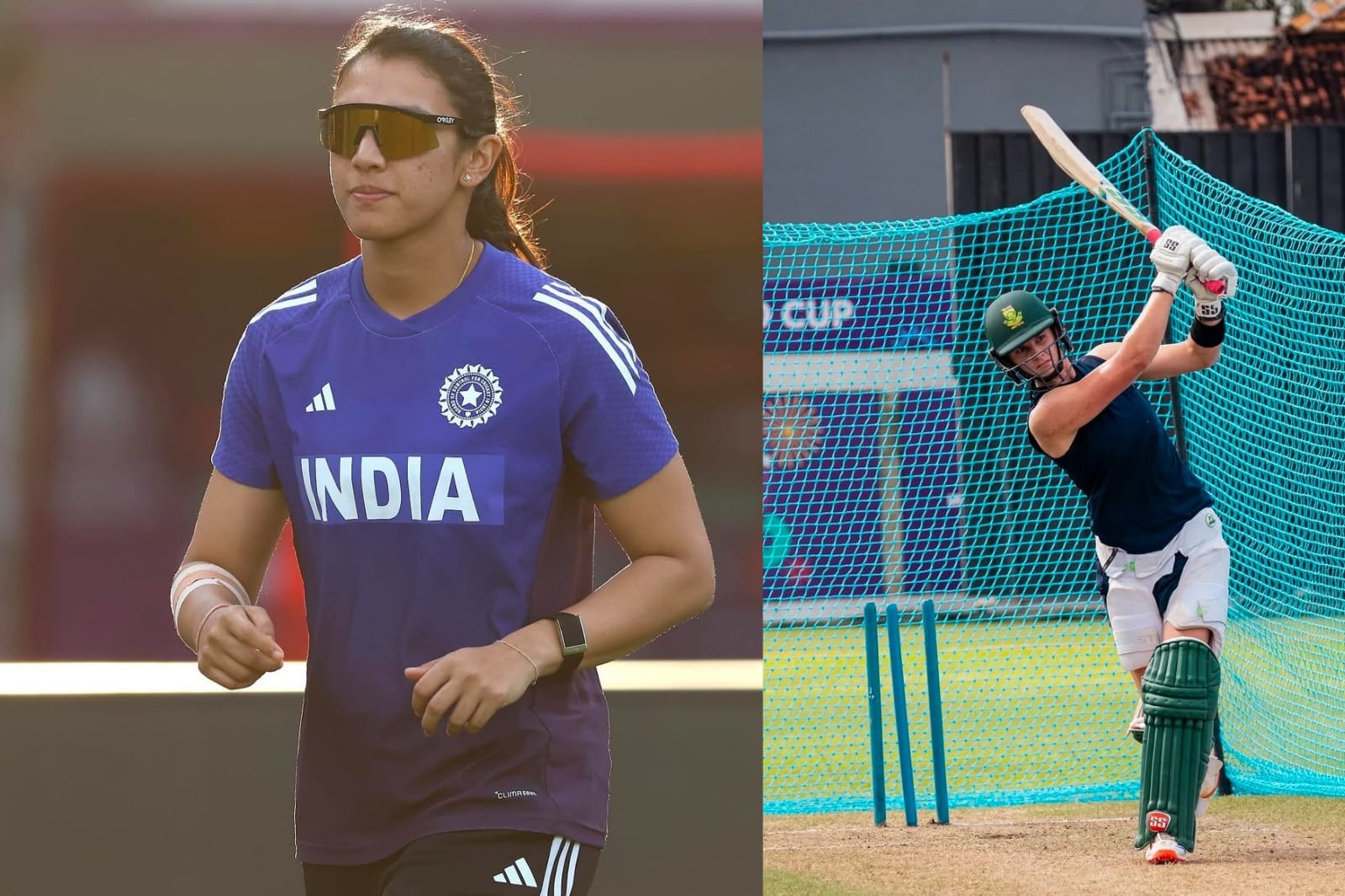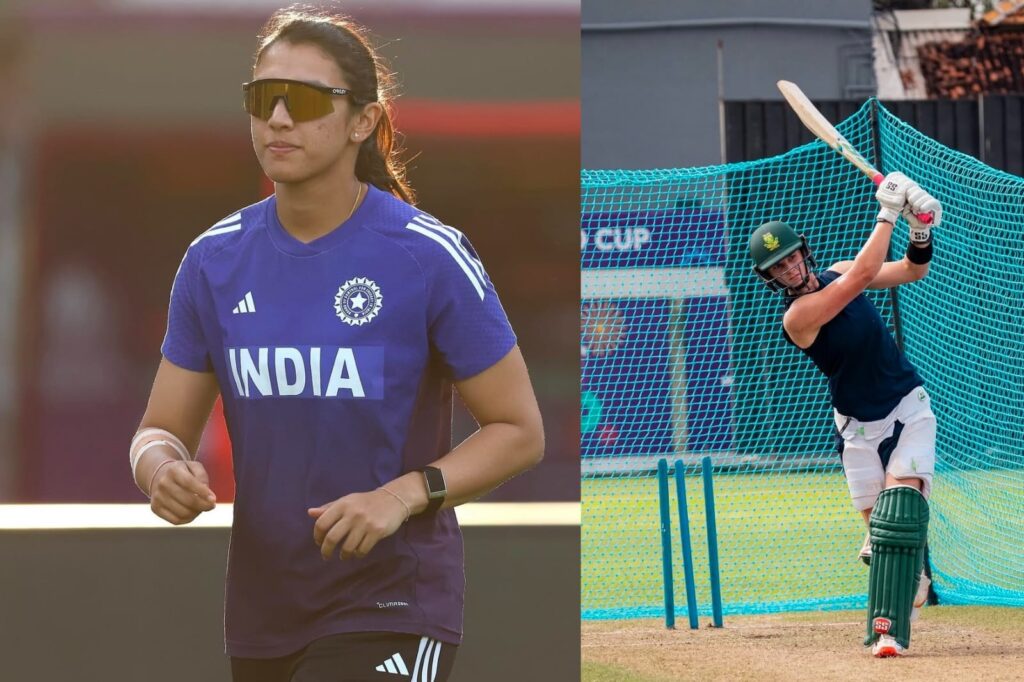
Trisha Ghosal in Vizag
India and South Africa entered this Women’s World Cup leaning heavily on their opening stars, Smriti Mandhana and Laura Wolvaardt. Since the last tournament, the pair have towered over the international field in consistency and productivity: Mandhana has piled up 2,100 runs in 37 innings at an average of 58.33, while Wolvaardt has scored 1,736 in 36 innings at 56.00. Yet, for all that dominance, their starts have been unexpectedly flat and tomorrow’s India–South Africa encounter feels like a defining one for both.
A Jarring Opening Act
Mandhana began her campaign against Sri Lanka, only to fall to a full-length outswinger from Udeshika Prabodhani, a rare lapse that saw her caught at deep point. Against Pakistan, she looked scratchy from the outset and eventually perished for 23, again undone by movement. Swing, particularly late or incoming movement, has exposed a recurring weakness in her otherwise fluent game.
Wolvaardt’s start has been equally subdued. Against England, she nicked off to Linsey Smith for a modest 5; against New Zealand, she misjudged an inswinger from Jess Kerr and was trapped lbw for 14. Her elegant, timing-based approach offers no protection when the ball bends back late under the lights.
Both India and South Africa rely heavily on their openers to set the tempo. When either fails, the rest of the batting unit is forced into repair mode far earlier than ideal.
The Role They Must Play
In India’s setup, Mandhana is not merely the aggressor, she is the anchor who bridges the new ball and the middle order. Over the past few years, India’s most convincing wins have followed her blueprint: a strong start in the powerplay followed by controlled rotation through the middle overs. Her experience and composure at the top often dictate the rhythm of the innings.
For South Africa, Wolvaardt has grown from stylish stroke-maker to stateswoman. As captain, she embodies tactical poise and responsibility, guiding a younger squad through pressure scenarios. The Proteas’ batting revolves around her, when she stays, stability follows.
If one of them falters, the consequences ripple through their respective teams: momentum stalls, pressure mounts, and belief wavers.

The Common Nemesis: Swing
It’s no coincidence that both have been troubled by swing early in this World Cup. Mandhana, confident against pace and spin alike, has looked uncertain when the ball moves in the air. Wolvaardt, whose off-side game is among the finest in the world, can be vulnerable when seamers angle the ball back into her pads.
Both must recalibrate, playing later, keeping their head still, judging the ball’s line early and resisting the urge to drive on instinct. Against swing, caution in the first few overs can be worth far more than flair.
Tomorrow’s Clash: A Match of Redemption?
India arrive in Vizag with four points from two matches; South Africa have two from the same number. Both will be under pressure, but the spotlight will be fiercest on their openers. The Vizag pitch is expected to be batting-friendly, though humidity could offer some movement early on.
It may well come down to this: whoever finds their rhythm first could shape the match. The rest of the batting line-up can build only if the platform holds firm.

For India, a confident Mandhana innings can lift the dressing room and free up the stroke-makers behind her. For South Africa, a composed Wolvaardt knock could steady nerves and allow the middle order to attack without fear.
Tomorrow, as both step out at the ACA–VDCA Stadium, every delivery will feel heavier, every shot more symbolic. Two world-class batters, both searching for rhythm, both carrying their nations’ hopes. On a pitch that should reward strokeplay, it might take just one innings of quality, from either end, to define the contest. Who will that be?
For more updates on the Women’s Cricket World Cup, follow RevSportz





